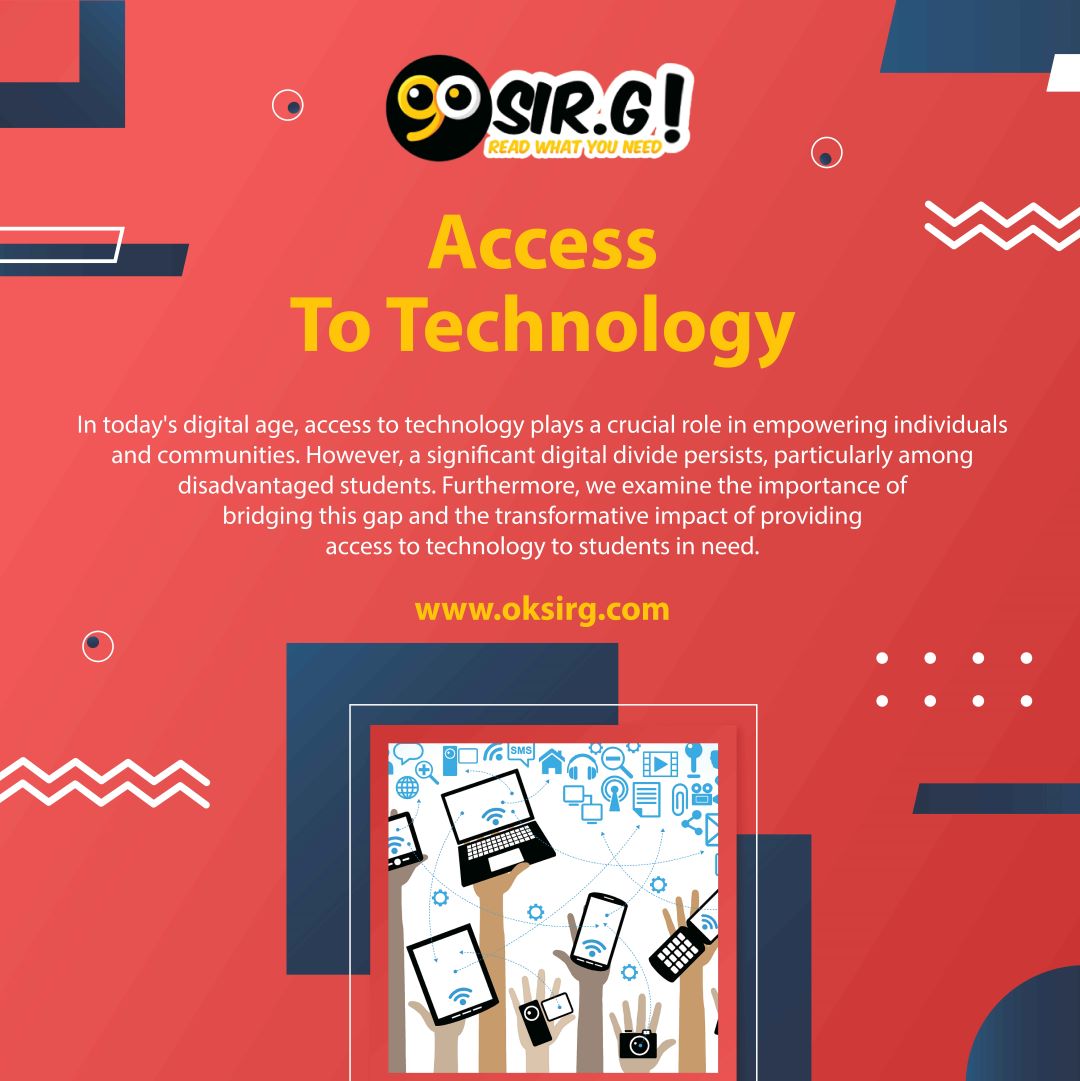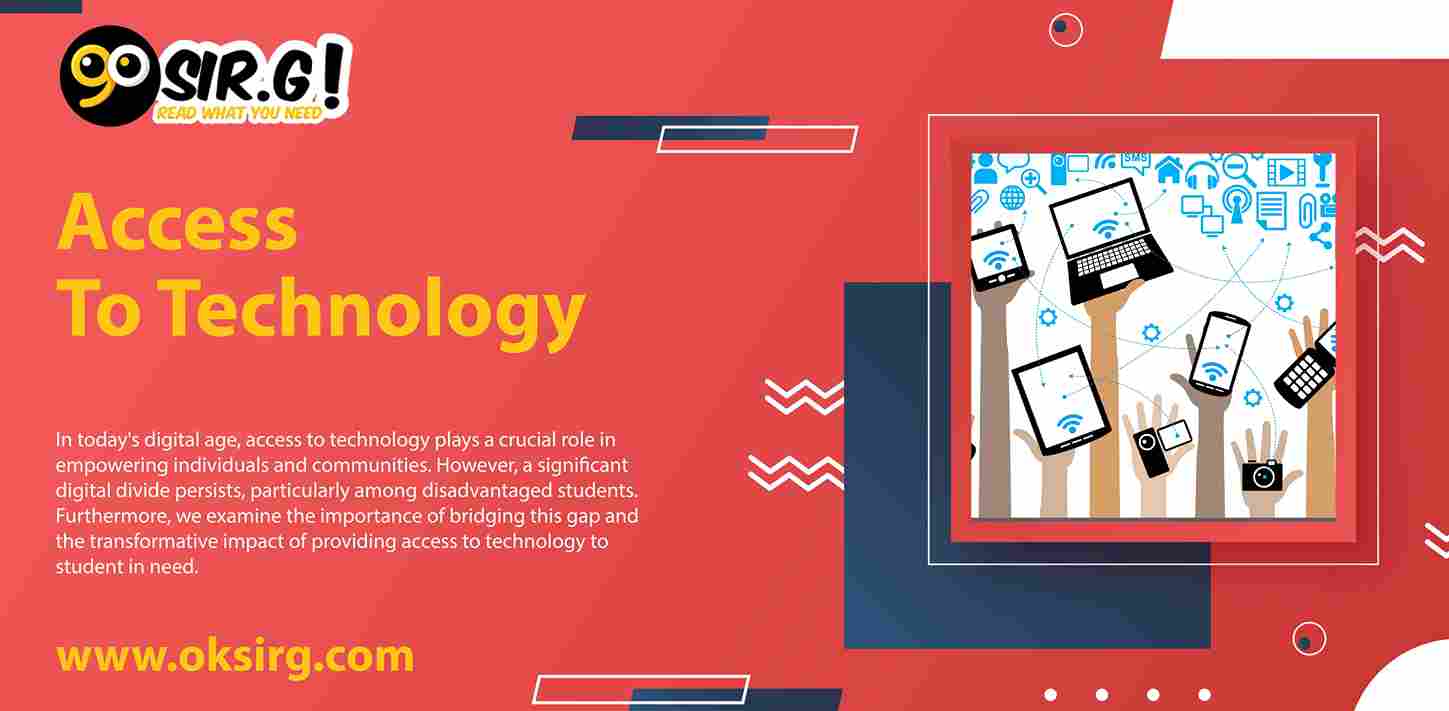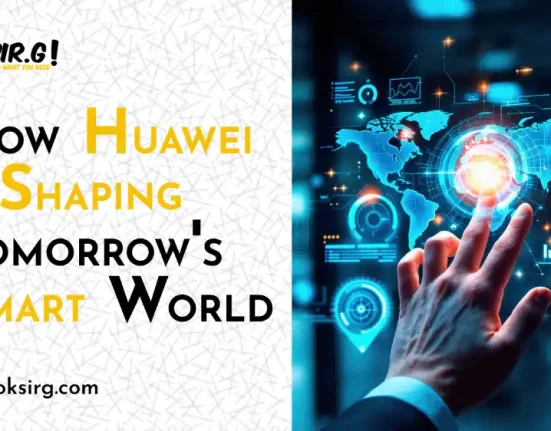Access to technology and digital literacy is essential to bridge the digital divide between different population groups. The digital divide mentions the gap between those with access to technology and the Internet and those without access.
In today’s digital age, access to technology plays a crucial role in empowering individuals and communities. However, a significant digital divide persists, particularly among disadvantaged students. Furthermore, we examine the importance of bridging this gap and the transformative impact of providing access to technology to students in need.
The Digital Divide: A Barrier To Educational Equity:
The digital divide refers to the gap between those with access to technology and those without access. Moreover, in education, this gap creates inequalities in learning opportunities and hinders the academic progress of disadvantaged students.
The digital divide exacerbates existing educational inequalities, making it difficult for disadvantaged students to acquire basic digital skills and fully participate in modern educational practices. Furthermore, the digital divide widens the achievement gap and limits their academic development and prospects. Moreover, closing this gap is critical to ensuring equitable education and empowering disadvantaged students.
Empowering Disadvantaged Students Through Access To Technology:
Access to technology for disadvantaged students opens a world of learning opportunities. It gives them access to educational resources, online courses, and digital libraries to expand their knowledge and broaden their horizons. Integrating technology into the classroom enables interactive and engaging learning experiences and encourages critical thinking and creativity.
Access to technology equips disadvantaged students with essential digital skills and enables them to thrive in a technology-driven world. They are proficient in using productivity tools, conducting online research, and using educational apps. Furthermore, these skills improve their employability and prepare them for success in higher education and the labor market.
Breaking Down Barriers And Promoting Inclusion-Digital Literacy:
Efforts to bridge the digital divide require investments in infrastructure and connectivity. It is essential to provide schools and communities with reliable access to the Internet and the necessary devices, such as computers or tablets. Furthermore, cooperation between government, educational institutions, and private organizations can help fund and implement these initiatives.
Comprehensive digital skills programs should accompany access to technology. These programs teach disadvantaged students safe and responsible use of the Internet, computer skills, and online privacy. Moreover, students obtain the knowledge and skills to navigate the digital environment successfully by promoting digital literacy.
Public-Private Partnerships: A Collaborative Approach:
Bridging the digital divide requires collaboration between the public and private sectors. Governments, educational institutions, and private organizations can work together to mobilize resources such as financial support, technology donations, and expertise. Furthermore, public-private partnerships can create sustainable initiatives that have a lasting impact on disadvantaged students access to technology.
Community involvement is essential to ensure the success and sustainability of initiatives. Furthermore, working with local organizations, community leaders, and parents can help identify specific needs and find appropriate solutions. Involving stakeholders in decision-making and implementation gains community support and ensures their relevance to intended beneficiaries.
Bridging the digital divide between disadvantaged students is critical to achieving educational equity and empowering the next generation. Access to technology offers opportunities for better learning, developing digital skills, and increasing opportunities for disadvantaged students. By investing in infrastructure, digital literacy programs and supporting public-private partnerships, we can create a more inclusive and equitable education system that enables all students to thrive in the digital age.
Frequently Asked Questions:
What does bridging the digital divide mean?
A: Bridging the digital refers to actions aimed at reducing or bridging the gap between those without access to technology and the Internet. It ensures equal opportunities for individuals and communities to access and use digital resources effectively.
Q: Why is bridging the digital divide important?
A: Bridging the digital divide is critical to promoting equality and inclusion in today’s increasingly digital world. It allows everyone, regardless of socioeconomic background, to access the educational, economic, and social opportunities technology offers. It helps prevent further inequality and enables individuals and communities to participate fully in the digital age.









Leave feedback about this
You must be logged in to post a comment.